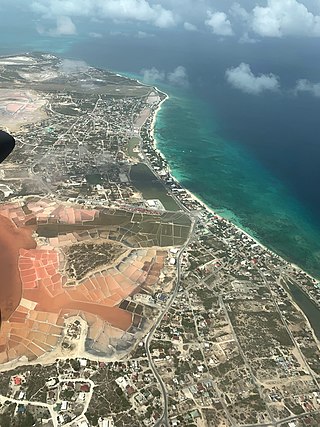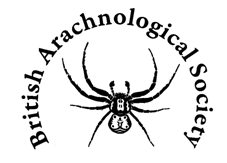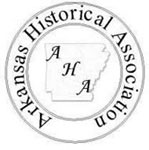
Dom Henrique of Portugal, Duke of Viseu, better known as Prince Henry the Navigator, was a central figure in the early days of the Portuguese Empire and in the 15th-century European maritime discoveries and maritime expansion. Through his administrative direction, he is regarded as the main initiator of what would be known as the Age of Discovery. Henry was the fourth child of King Dom John I of Portugal, who founded the House of Aviz.

Terra Australis was a hypothetical continent first posited in antiquity and which appeared on maps between the 15th and 18th centuries. Its existence was not based on any survey or direct observation, but rather on the idea that continental land in the Northern Hemisphere should be balanced by land in the Southern Hemisphere. This theory of balancing land has been documented as early as the 5th century on maps by Macrobius, who uses the term Australis on his maps.

Grand Turk is an island in the Turks and Caicos Islands, a British Overseas Territory, tropical islands in the Lucayan Archipelago of the Atlantic Ocean and northern West Indies. It is the largest island in the Turks Islands with 18 km2 (6.9 sq mi). Grand Turk contains the territory's capital, Cockburn Town, and the JAGS McCartney International Airport. The island is the administrative, historic, cultural and financial centre of the territory and has the second-largest population of the islands at approximately 4,831 people in 2012.

The Cantino planisphere or Cantino world map is a manuscript Portuguese world map preserved at the Biblioteca Estense in Modena, Italy. It is named after Alberto Cantino, an agent for the Duke of Ferrara, who successfully smuggled it from Portugal to Italy in 1502. It measures 220 x 105 cm.

The Linguistic Society of America (LSA) is a learned society for the field of linguistics. Founded in New York City in 1924, the LSA works to promote the scientific study of language. The society publishes three scholarly journals: Language, the open access journal Semantics and Pragmatics, and the open access journal Phonological Data & Analysis. Its annual meetings, held every winter, foster discussion amongst its members through the presentation of peer-reviewed research, as well as conducting official business of the society. Since 1928, the LSA has offered training to linguists through courses held at its biennial Linguistic Institutes held in the summer. The LSA and its 3,600 members work to raise awareness of linguistic issues with the public and contribute to policy debates on issues including bilingual education and the preservation of endangered languages.

The Hakluyt Society is a text publication society, founded in 1846 and based in London, England, which publishes scholarly editions of primary records of historic voyages, travels and other geographical material. In addition to its publishing role, the Society organises and participates in meetings, symposia and conferences relating to the history of geographical exploration and cultural encounter. It is a registered charity and a non-profitmaking institution administered by a voluntary team of council members and officers. Membership is open to all with an interest in its aims.

The theory of Portuguese discovery of Australia claims that early Portuguese navigators were the first Europeans to sight Australia between 1521 and 1524, well before the arrival of Dutch navigator Willem Janszoon in 1606 on board the Duyfken who is generally considered to be the first European discoverer. While lacking generally accepted evidence, this theory is based on the following:

The Biophysical Society is an international scientific society whose purpose is to lead the development and dissemination of knowledge in biophysics. Founded in 1958, the Society currently consists of over 7,500 members in academia, government, and industry. Although the Society is based in the United States, it is an international organization. Overseas members currently comprise over one third of the total.

John Kirtland Wright (1891–1969) was an American geographer, notable for his cartography, geosophy, and study of the history of geographical thought. He was the son of classical scholar John Henry Wright and novelist Mary Tappan Wright, and the brother of legal scholar and utopian novelist Austin Tappan Wright. He married Katharine McGiffert Jan. 21, 1921 in New York, N.Y. They had three children: Austin McGiffert Wright, Gertrude Huntington McPherson, and Mary Wolcott Toynbee.

Isla Grande is a small island and corregimiento in Portobelo District, Colón Province, Panama, off the Caribbean coast. It had a population of 1,037 as of 2010. Its population as of 1990 was 626; its population as of 2000 was 1,055. During the right times of year, the water between the island and the mainland provides an excellent surfing environment. Most of the people found in the town are of African descent and trace it back to black African slaves and those known as Cimarrones. Its historical name was Isla Grande de Bastimentos. It was discovered and named in Spanish "Isle and port of Provisions" by Christopher Columbus in 1502 during his fourth and last voyage. As the Bastimentos together with its nearby port it played an important role in history as the place where in 1726/7 the British Admiral Francis Hosier with 3,000 of his sailors died of tropical disease whilst anchored with his fleet of 20 ships during the disastrous Blockade of Porto Bello.

Lambda Iota Tau (ΛΙΤ) was an American international honor society for literature, whose purpose was to recognize and promote excellence in the study of literature in all languages. It was admitted to the Association of College Honor Societies (ACHS) in 1965. It was absorbed by Sigma Tau Delta in 2016-2017.

Pierre Desceliers was a French cartographer of the Renaissance and an eminent member of the Dieppe School of Cartography. He is considered the father of French hydrography.

The Health Physics Society (HPS) is a nonprofit scientific professional organization whose mission is excellence in the science and practice of radiation safety. It is based in the United States and the specific purposes of the society's activities include encouraging research in radiation science, developing standards, and disseminating radiation safety information. Society members are involved in understanding, evaluating, and controlling potential risks from radiation relative to the benefits.

The map of Juan de la Cosa is a world map that includes the earliest known representation of the New World and the first depiction of the equator and the Tropic of Cancer on a nautical chart. The map is attributed to the Castilian navigator and cartographer, Juan de la Cosa, and was likely created in 1500.
The Arizona Geological Society (AGS) is a non-profit scientific organization founded in 1948 whose purpose is to promote and encourage interest in the science of geology and in the geology of the State of Arizona. The Society holds monthly meetings, and sponsors field trips and symposia. Membership is open to professional geoscientists and those who are interested in Arizona geology. Membership categories include Voting Members, Student Members, Honorary Life Members, and 50-Year Members.

Terrae Incognitae is a triannual peer-reviewed academic journal covering the history of cartography, geography, and exploration. It is published by the Society for the History of Discoveries.

The British Arachnological Society (BAS) is the UK’s first body devoted exclusively to the study of arachnids. The primary objectives of the Society are to encourage interest in arachnology in people of all ages and to generate, promote and disseminate arachnological knowledge and understanding by all suitable means. In particular, it works to foster co-operation between amateur and professional arachnologists.

The Arkansas Historical Association is a historical society based at the University of Arkansas in Fayetteville, Arkansas.
United Commercial Travelers or UCT is a non-profit financial services membership organization that supports communities and causes across the United States and Canada. The organization is headquartered in Columbus, Ohio, just south of Grandview Heights.

Bastimentos was an island, anchorage and harbour near Portobelo on the north-western coast of Panama discovered and named in Spanish "Isle and port of Provisions" by Christopher Columbus in 1502 during his fourth and last voyage. Although the location of the two adjacent Bastimentos Islands is largely undisputed, the location of the harbour, shown on several 18th century Spanish maps as on the mainland opposite the islands, is suggested by various modern commentators to lie about 7 miles distant, thus its exact location is now uncertain and a matter of conjecture. Harris (2013) states: "by 1513 the record of (Columbus's) discoveries in this small region had become so clouded that it has since generated countless investigations and over the years a voluminous literature has been created in which attempted reconstructions of the voyage often have been conjectural and controversial". Bastimentos was the place where in 1726/7 the British Admiral Francis Hosier with three thousand of his sailors died of tropical disease whilst anchored with his fleet of 20 ships during the disastrous Blockade of Porto Bello. Due to the popularity of Richard Glover's poem and song Admiral Hosier's Ghost (c.1739), which mentions them twice, the Bastimentos became in England synonymous with "foul dishonour" and "shameful doom". The location should not be confused with Bastimentos Island, Bocas del Toro, 270 km to the west, also discovered by Columbus on his 4th Voyage, before reaching Portobelo.



















